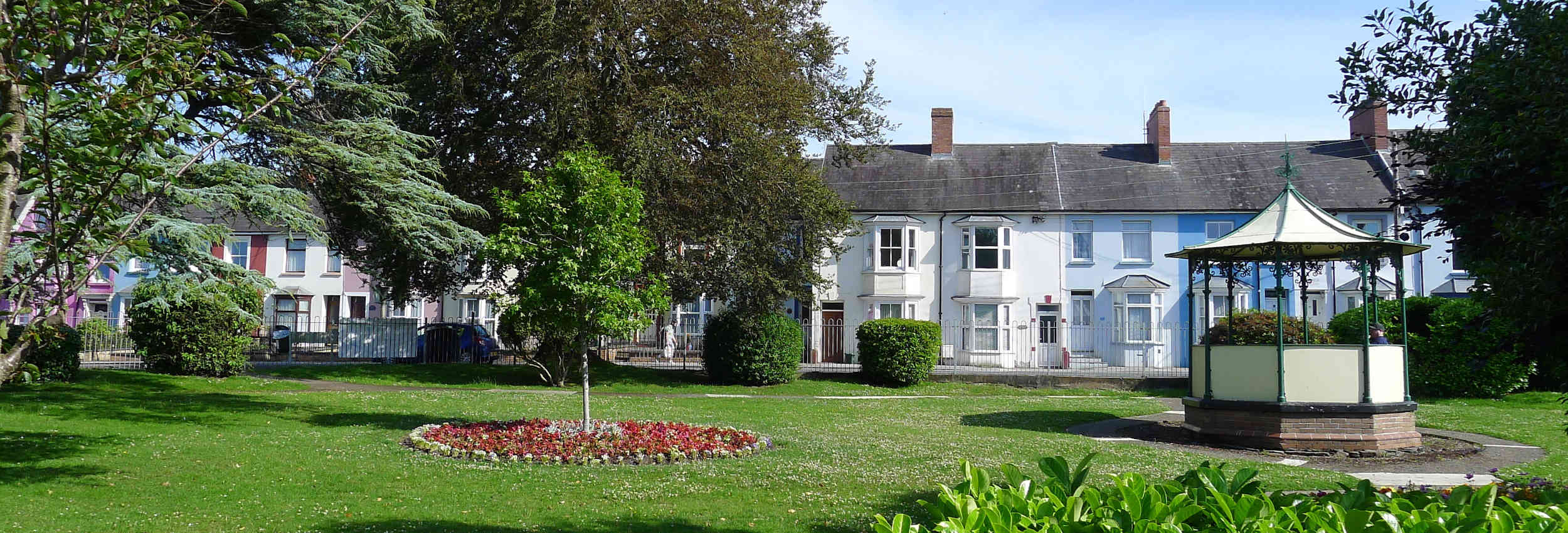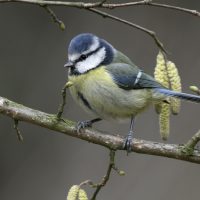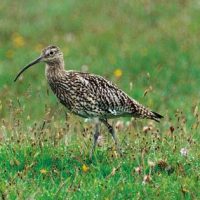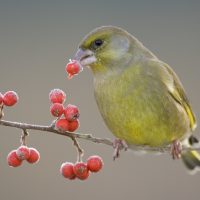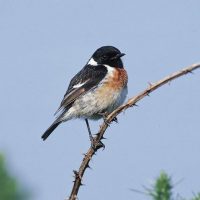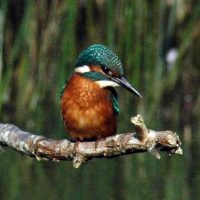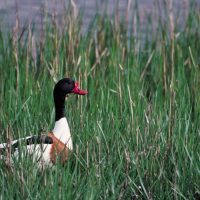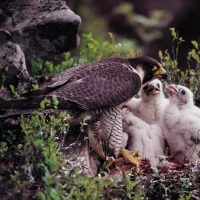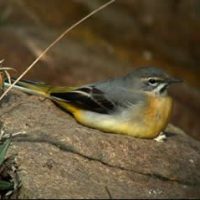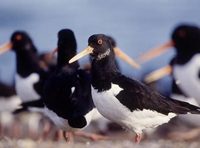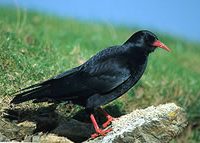Birdwatching
The coast as a whole varies greatly, from the sand-dune systems of Newport, Poppit and Gwbert to the rugged rocky shore of Cemaes Head, Cardigan Island, Mwnt and Llangranog, not to mention the two estuaries of the Afon Nefern and Teifi. Then there are the multitude of wooded valleys, which is spring and summer vibrate to the sound of singing birds.
Kingfisher can be seen in Cardigan BayIn truth anywhere in the area is not only good for birds but also scenically impressive. It is therefore impossible to cover all the good sites in this short guide (for more detailed information see the book, “Birding in Pembrokeshire” by Green & Roberts – ISBN 095421451X).
For coastal species, such as Chough, Peregrine, Stone Chat and seabirds then head for Mwnt or Llangranog. If it is waders then go to the estuaries of Nevern and Teifi, for wildfowl it has to be the Teifi estuary or the Teifi Marshes. Shelduck – Cardigan Bay But for shear volume the old woodlands can’t be beaten, check out the Teifi valley between the Teifi Marshes and Llechryd. The Teifi River Trail is a great way to discover the wildlife of Cardigan.
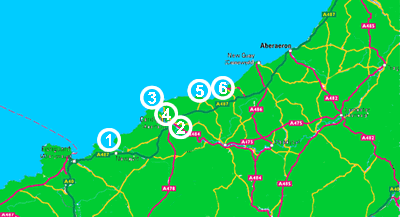
Click a thumbnail for larger image and name of bird
1. Newport Bay/Nevern Estuary
The River Nevern enters the sea at Newport, making a small sandy estuary. There are footpaths on both sides of the estuary, which makes the area easy to cover. This site does suffer from quite a lot of disturbance especially during peak holiday times.
| Access/Parking Parrog | Birding Tips/Key Birds |
|---|---|
| (SN053396) The “iron bridge” on the road to the golf course (SN063395). Best Times to visit All year. For waders a half or low tide | The majority of birds tend to congregate towards the iron bridge but sometimes a short walk along the footpath from there gets a better view. Up to 100 Wigeon, 50 Teal, 50 Oystercatchers, 150 Curlew and 15 Redshanks winter on the estuary.
Other species that are often seen include Heron, Little Egret and Kingfisher (best observed from the iron bridge, check the stony banks upstream in winter). Wader passage in spring and autumn make this site well worth a look. Kentish Plover have been seen in spring and in autumn Little Stints and Curlew Sandpipers. A check of the pipits in winter may produce Water Pipit. |
2. Afon Teifi
The River Teifi is the northern border of Pembrokeshire, with Ceredigion and in places Carmarthenshire. Many of the best places for birds lie on one side or another of his imaginary line.
| Access/Parking Parrog | Birding Tips/Key Birds |
|---|---|
| a) Cilgerran Gorge (SN197429) – turn down the small lane by the side of Cilgerran Post Office. | Park by the river and walk in either direction (to the left, only ¼ mile, or to the right, approx. 2 miles to Llechryd Bridge). This is an excellent site for seeing Kingfisher as well as Otter. The woods contain the usual species, including Pied Flycatchers, Redstarts, Greater and Lesser Spotted Woodpeckers. |
| b) Llechryd Bridge (SN217436) – park on the Pembrokeshire side, next to the entrance to Castell Malgwyn | A look from the bridge should reveal Grey Wagtail, possibly Dipper and if you are very lucky Otter.The small diffuse woodland by lane has in the past held Pied Flycatchers, Redstarts and Lesser Spotted Woodpeckers. |
| c) Cenarth (SN269 416) – park on the Ceredigion side of the river in the charged car park, or in the free car park on the southern (Carmarthenshire) side. | Walk up by the side of the falls, on the northern (Ceredigion) side. Dippers and Grey Wagtails are almost guaranteed. In summer the woods hold the usual summer visitors, as well as Redstart and Pied Flycatcher. |
| c) Newcastle Emlyn – park in the town car park by the Cattle Market or behind the town clock. | The walk by the river, at the back of the ruined castle (SN312407) is very pleasant. Kingfisher, Dipper, Grey Wagtails and a multitude of feral Canada Geese may be seen. In winter there may also be Goosander. |
3. Teifi Estuary
Unfortunately there is a lot of disturbance on the estuary and waders often don’t stop here for long. There are several key sites, as described below:
| View Points & Best Times to visit | Birding Tips/Key Birds |
|---|---|
| Behind Jewsons – Half or low tide (SN166460) St. Dogmael’s slip way – Half or low tide (SN164467) Webley – High tide (SN158479) Patch – High Tide (SN160484) | Passage and wintering waders, very little in summer. “Jewsons” is good for wintering and passage Common Sandpipers, Redshank and Whimbrel.St. Dogmael’s slipway is the best place to view the various gulls, Mediterranean are fairly common in ones or twos. Little, Glaucous and Iceland have also been seen from here. Scan the far bank for waders and Little Egrets.The spit opposite the Webley pub is the high tide roost for the larger waders, Oystercatchers, Curlew, Godwits and Knot.Opposite the Webley on the northern shore, beyond the caravan site / boat club is where the smaller waders congregate. Dunlin, Sanderling, Ringed Plover and in autumn Little Stint and Curlew Sandpiper. |
4. Teifi Marshes – Welsh Wildlife Centre
The Teifi Marshes is one of the major reserves owned and managed by the Wildlife Trust South & West Wales (phone number 01239 621600). The marsh is bisected by the old Cardigan-Whitland railway line which has been disused since the 1950’s (1963 I believe, a Beeching cut). There is a circular walk around the marshes (the Otter Trail) with 6 hides and another two woodland walks, one of which heads up the gorge to Cilgerran.
| Access/Parking | Birding Tips/Key Birds |
|---|---|
| Parking is available in the Visitor Centre car park on the southern side of the reserve (SN186448). Follow the signs out of Cardigan towards Cilgerran. On entering the village a left turn gives access to the Teifi Marshes Reserve along the old railway line. Look out for Sika Deer in the fields on the right. There is also pedestrian or cycle access from Cardigan along the riverside path from the Old Cardigan Bridge. The Visitor Information Centre on the reserve has a gift-shop and café. Best Times to visit – All year but preferably early in the morning or late afternoon. Mid day in the summer is a quiet time for birds. | The Otter Trail takes about 1 ½ hours to walk, heading from the Centre / car park along the old railway line. There are Cetti’s Warblers resident on the marsh and up to 30 Water Rails winter there. You may be very lucky and see a Bittern. In summer many pairs of both Reed and Sedge Warblers breed in the reed beds as well as good numbers of Reed Buntings.Check out the “Creek” and “Kingfisher” Hides for ducks, Kingfisher and Cetti’s Warbler, the “Curlew” Hide for Heron, Curlew and larger gulls. The “Heron or Pentwd” Hide is good for Teal, Wigeon, Heron, Green Sandpiper and ‘Shanks’ and has a good view over the whole marsh.
Marsh Harriers are sometimes seen from here on passage. The reserve has some good places to see Otters. Most sightings are usually on a falling tide, and in the evening or early morning. The Teifi Gorge Trail follows the River Teifi to Cilgerran, initially beside the river but then up the steep wooded slope onto Forest Hill. In summer there are good numbers of Redstarts and Pied Flycatchers breeding in the woodland along with both Greater and Lesser Spotted Woodpeckers. Peregrine Falcons occasionally nest in the disused quarries of the river gorge. |
5. Mwnt
Mwnt is owned by the National Trust, which runs the small car park (fee payable), toilets and in summer a small ice-cream kiosk.
| Access/Parking | Birding Tips/Key Birds |
|---|---|
| Pay and display car park | Early mornings or evenings are best due to the large number of visitors.A walk around the “Mwnt” itself should produce Rock Pipits and Stonechats. Black Redstarts are frequent winter and passage migrants, check around the chapel and the stream down to the beach. Watchers should see Chough. Peregrines are common as are Merlins in winter.A short sea-watch, in any season, should provide views of Bottle-nosed Dolphins and perhaps Porpoise. |
6. Llangranog – Ynys Lochtyn
The small headland, just to the north of Llangranog, is known as Ynys Lochtyn and is owned by the National Trust.
| Access/Parking | Birding Tips/Key Birds |
|---|---|
| Park in the beach car park, then follow the path and steps up the cliff to the north. A short walk, a mile or so, to Ynys Lochtyn. | A pleasant walk, not too strenuous, which gives fine views of the coast. Stonechats are almost guaranteed. On arriving at Ynys Lochtyn, check the “island” for Chough, which can be seen here all year. Luck observers may also see Peregrine and in winter Merlin.A careful scan of the sea should produce Bottle-nosed Dolphins and Red-throated Divers in winter. |

